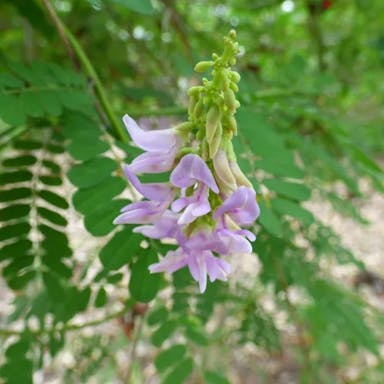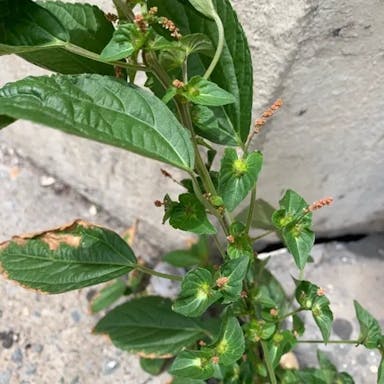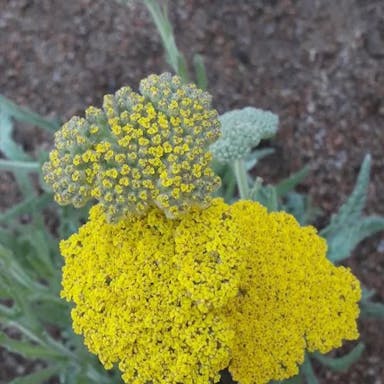American carpet grass benefits from regular pruning to maintain its appearance and health. Pruning helps remove dead or damaged foliage, promoting new growth. The best time to prune American carpet grass is in early spring before the growing season begins. Pruning should be done using sharp, clean tools to prevent tearing or damaging the plant. Cut back any overgrown or unruly stems to encourage a more compact growth habit. After pruning, water the plant thoroughly to help it recover and apply a balanced fertilizer to support new growth. Regular pruning will help American carpet grass thrive and remain visually appealing.
American carpet grass
- Scientific name
- Axonopus compressus
Basic Information
- Poaceae Family Axonopus Genus American carpet grass Species
- Poaceae > Axonopus > Axonopus compressus
- 83%
- The Completeness of This Encyclopedia
Please help us complete the encyclopedia, Terrarium is a encyclopedia service to be completed with everyone in the world. Currently, this page is 83% complete. For more information on how to contribute, please click here.
- Forb/herb
- Graminoid
- Height
- 30cm ~ 50cm
- Flower Color
- Leaf Color
- Anthesis
- summer
- Sunlight Exposure
Full Sun Long hours of sunlight from morning to afternoon Partial Shade A location in the shade of a tree or where either the morning or afternoon is shaded Full Shade A place where there is no direct sunlight
- Full Sun
- Hardiness Zones
This is an indicator to know to which zone each plant can winter. Knowing the zone of each plant gives you an idea of the cold temperature resistance when grown in the ground without a roof. 2: -42.7 to -40.0 3: -39.9 to -34.4 4: -34.3 to -28.9 5: -28.8 to -23.3 6: -23.2 to -17.8 7: -17.7 to -12.2 8: -12.1 to -6.7 9: -6.6 to -1.1 10: -1.0 to 4.4 11: 4.5 to 10.0
- 9
- Cold resistance
- Fair
- Heat resistance
- Excellent
- Habitat of origin
- South America
- Growth Rate
- Fast
What is American carpet grass (Axonopus compressus)?
What is American carpet grass (Axonopus compressus)
Flower meaning
American carpet grass is best suited for potted planting due to its invasive nature. When potting, choose a container with drainage holes to prevent waterlogging. Fill the pot with well-draining soil, leaving enough space for the plant's roots. Carefully remove the plant from its current container, gently loosen the roots, and place it in the new pot. Add more soil around the plant, pressing lightly to secure it. Water thoroughly after planting, keeping the soil consistently moist but not waterlogged. Repotting should be done every 2-3 years to refresh the soil and provide more space for growth. If the plant becomes leggy or overgrown, trim it back to maintain its shape and health.
Calendar of American carpet grass (Axonopus compressus)
Calendar
American carpet grass thrives in full sun to partial shade, preferring at least 6 hours of direct sunlight daily. It exhibits good cold tolerance, surviving in USDA hardiness zones 8-11. It can withstand high temperatures but may struggle in extreme heat, requiring adequate watering during hot periods. During winter, it may turn brown but typically regenerates in spring. Optimum temperatures range between 70-90°F (21-32°C). Over summer, ensure consistent watering to prevent wilting. In winter, reduce watering to avoid root rot. Placing American carpet grass in well-draining soil with good air circulation promotes healthy growth. It benefits from moderate fertilization and regular mowing to maintain its appearance.
How to grow American carpet grass (Axonopus compressus)
Watering
American carpet grass can be propagated through seeds, division, and cuttings. Seeds are sown in well-draining soil, kept moist until germination. Division involves separating clumps of the plant and replanting them. Cuttings are taken from healthy stems, rooted in water or soil. Leaf cuttings can also be used by planting individual leaves. To maximize propagation success, combine methods for increased plant yield. Harvest seeds when mature, divide plants in early spring, take cuttings in summer, and leaf cuttings in spring.
Soil and Fertilizer
American carpet grass typically blooms in the late spring to early summer months in the United States. The flowers are at their peak during the month of June. Blooming occurs once a year, lasting for about 2-3 weeks. To extend the blooming period, ensure the plant receives adequate sunlight, water, and nutrients. Regular deadheading of spent flowers can also promote continuous blooming.
Sunlight and Place
American carpet grass is susceptible to various pests and diseases, including armyworms, cutworms, and nematodes. These pests can cause damage by feeding on the plant's foliage or roots, leading to stunted growth and yellowing of the leaves. To prevent infestations, regular monitoring of the plant for signs of pest activity is essential. Additionally, maintaining proper cultural practices such as adequate watering and fertilization can help improve the plant's resistance to pests. Moreover, American carpet grass is prone to diseases like dollar spot, brown patch, and rust. These diseases can cause discoloration, thinning, and withering of the grass blades. Proper lawn care practices, such as avoiding excessive nitrogen fertilization and improving air circulation, can help prevent the occurrence of these diseases.
Advanced Information of American carpet grass (Axonopus compressus)
Pruning
American carpet grass is available in two main varieties: 1) Variety A, known for its high tolerance to shade and ability to thrive in moist conditions. It is ideal for lawns in shaded areas. 2) Variety B, which is more drought-tolerant and suitable for sunny locations with well-drained soil. When selecting seeds, look for plump, firm seeds without signs of damage or discoloration. For seedlings, choose ones with healthy green leaves and a strong root system. Ensure the seedlings are free from pests or diseases. It is essential to select the variety that best suits your specific growing conditions.
Planting and Harvest
American carpet grass, scientifically known as Axonopus compressus, is a warm-season perennial grass native to the Americas. It is characterized by its dense, low-growing habit, making it an ideal choice for lawns and erosion control. The grass produces small, inconspicuous flowers that are typically green or purplish in color. Axonopus compressus is a type of creeping grass that forms a thick carpet-like mat. It is often used in tropical and subtropical regions due to its ability to thrive in hot and humid conditions. The grass does not produce any significant fruit and is primarily propagated through seeds or sod. In terms of size, American carpet grass can reach a height of about 6-12 inches. It is relatively easy to grow and maintain, requiring moderate watering and occasional mowing to keep it looking neat. Overall, Axonopus compressus is a versatile grass species with various landscaping applications.
Propagation
The flower language commonly used in America for American carpet grass is: - Resilience - Strength - Endurance One typical example is "Resilience," symbolizing the ability to bounce back from challenges and adversity, much like the American carpet grass's ability to thrive in various conditions.
Pests and Diseases
For American carpet grass, watering frequency should be moderate, typically once a week during the growing season. During hot summer months, increase watering to twice a week to prevent wilting. Ensure the soil is consistently moist but not waterlogged, maintaining a humidity level of around 50-60%. Water in the early morning to reduce evaporation loss and allow foliage to dry before nightfall. In winter, reduce watering to once every two weeks, adjusting based on soil moisture levels. Avoid overwatering as it can lead to root rot and other issues.
Habitat of American carpet grass (Axonopus compressus)
Habitat
Toxicity of American carpet grass (Axonopus compressus)
Health Benefits
- edible
- Inedible
- Toxic
- No toxicity
NO DATA
Toxic for dogs and cats
NO DATA
Q&A of American carpet grass (Axonopus compressus)
- Is there a recommended way to choose American carpet grass?
American carpet grass thrives in well-drained soils with a pH range of 5.5 to 6.5. It prefers sandy or loamy soils with good fertility. Fertilize American carpet grass with a balanced slow-release fertilizer in early spring and late summer. Apply 1 to 2 pounds of nitrogen per 1,000 square feet per year. Avoid over-fertilization as it can lead to thatch buildup. Regularly test the soil to monitor nutrient levels and adjust fertilizer applications accordingly. Ensure the soil is moist before fertilizing to prevent burning the grass. Monitor the grass for signs of nutrient deficiencies and adjust the fertilizer type or amount as needed.












